#7dbv
Text
7 Days Before Valentine
It's the first episode so I won't do any analysis, but I will give some Stray Thoughts:
7 Days Before Valentine has quickly ascended to the top of the Queer Asian Shows With Phenomenal Lighting pack. It gained my loyalty to watch the show regardless of whether it ends up good or bad within the first minute and a half of the episode, based entirely on the lighting they had going on.
I think I saw someone else mention this, but the style of this show feels like a mix of old detective noir pieces and also stage plays. I was worried about the script a bit at the beginning of the show, but once I realized how much this show seemed to be emulating noir films, that concern went away and I got with the program.
Aside from the lighting itself, the cinematography is brilliant
I am intrigued by the concept of this show, and do want to know how the rest of the narrative unfolds.
I really love how much Tu Punnasack's history as a playwright/in theater bleeds through his work. The sets always feel like they belong on a stage, the blocking of a scene often feels like it belongs on a stage, and as someone with a lot of theater study under their belt, I love how legible that style is in Punnasack's work.
I need to admit now that I will probably give this show a lot more wiggle room than I would others because Tu Punnasack is responsible for 180 Degrees Longitude Passes Through Us the show that sent me in to the biggest emotional distress of my life, and one of my favorite pieces of media ever.
BUT I will probably give less wiggle room to the actors in 7 Days Before Valentine because I know what Pond, Nike, and Mam were able to give us in 180 Degrees.
With that in mind, I am worried about whether or not Atom, who plays Sunshine is a strong enough performer for me to get emotionally invested in his character arc. I hate character's with Sunshine's brand of immaturity and so Atom has a lot of work cut out for him to get me to care about Sunshine.
I think Jet who plays "Q" has done a lot of interesting things in his limited screen time.
Ultimately, this show is a visual/technical feast and I do plan to stick with this for awhile, even if it's just to see some fun lighting design happening!
#7 days before valentine#7dbv#7 days before valentine the series#180 degree longitude passes through us#tu punnasack
27 notes
·
View notes
Text
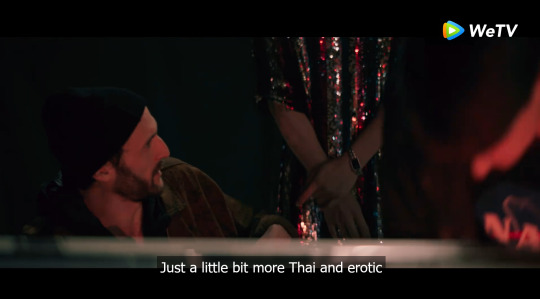
New favorite line. Ever. @absolutebl You know, they know their audience.
#7 days before valentine#7dbv#thai bl#thai drama#bl drama#bl series#thai series#thaibl#asianlgbtqdramas#asian lgbtq dramas#thai bl series#thai bl drama#i made a sound when i saw this#it's like all the soft power lines#they know their audience
40 notes
·
View notes
Text
"7 days before valentine" is so unusual!
And I mean that in the best way. Not just the story but also the settings, the way it's shot, everything.
For now I've only seen the first episode but I'm already very intrigued.
At first I was doubtful, because I don't really like when the plot revolves around betrayal BUT in the end I easily became fond of Rain and Air to the point that I struggle to find a reason why Sunshine deserves empathy.
He wasn't a very attentive boyfriend, I agree that no one deserves to be left by their boyfriend like that BUT the breakup was in the air, if only he had been more attentive he would have sensed it.
The Cupid Reaper is intriguing and will probably end up being Sun's love interest, I'm not sure because I haven't watched any teasers or trailers for this drama, so I'm writing by intuition.
Anyway, it looks very promising!
5 notes
·
View notes
Text
these meet cutes are getting out of hand

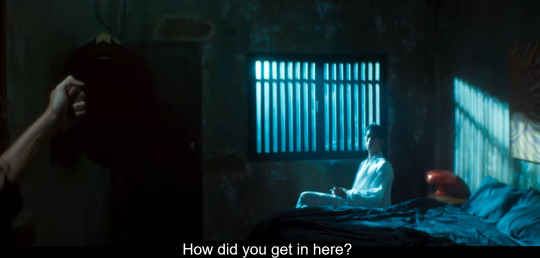
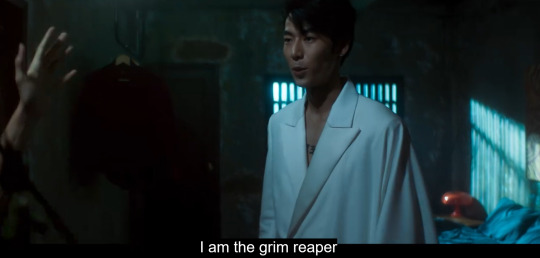
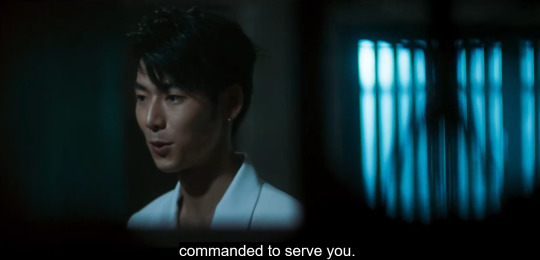
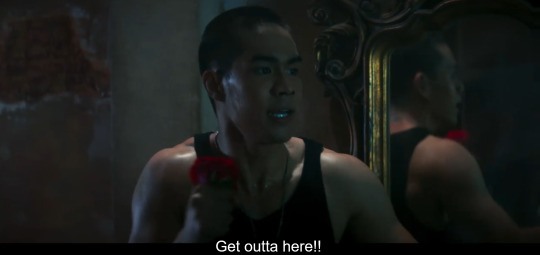
38 notes
·
View notes
Text
WHAT IS THIS FUCKING
HOLLYWOOD BLOCKBUSTER BUDGET THAI BL THAT CAME OUT TODAY
where the fuck did 7 Days Before Valentine come from and what dimension have i fallen into
19 notes
·
View notes
Text
how tired am I? I keep falling asleep watching my shows
#I got too cozy on my bed last night#idk what happened in 7DBV#and if i was at the desktop? prob would have fell asleep in the chair too#it was barely after 8pm too
1 note
·
View note
Photo

Never let anyone treat you like you’re ordinary😶 https://www.instagram.com/p/B8GRkCOppaqHvg5lBUxu6nhmg76-7DbV-c7PH00/?igshid=1t346ik10khlo
0 notes
Text
‘Isabel’ Grape Treated with Abscisic Acid in Different Maturation Stages
Horticulture JournalAuthor: Sergio Ruffo Roberto
Abstract
Isabel grape is one of the main cultivars used for juice processing, but presents deficiency in anthocyanins, pigments responsible for the color. Thus, an alternative for increasing the color is to promote synthesis of this compound, which can be accomplished using growth regulators, like abscisic acid (ABA). This work aimed to evaluate anthocyanins and polyphenols concentration in berry and juice of ‘Isabel’ grape treated with abscisic acid in different maturation stages. Statistical model used was a randomized block design with seven treatments and five replications: control; S-ABA 400mgL-1, applied 7 days before véraison (DBV); S-ABA 400mgL-1, applied at véraison (V); 7 days after véraison (DAV); S-ABA 400mgL-1, applied 7DBV + S-ABA 400mgL-1 35 days after the first application (DAFA); S-ABA 400mgL-1, applied at V + S-ABA 400mgL-1 35DAFA; and S-ABA 400mgL-1, 7DAV + S-ABA 400mgL-1 35DAFA. S-ABA application increases anthocyanins concentration, color variables, and acceptability of juices in sensory analysis, without affecting polyphenols concentration. Two applications of S-ABA 400mgL-1 provide best results regarding the increment of berries and juice color of ‘Isabel’ grape.
Keywords: Color; Phenolic compound; Plant growth regulator; Sensory analysis; Vitis labrusca
Abbrevations: DBV: Days Before véraison; V: At véraison; DAV: Days after véraison; DAFA: Days after the First Application; CI: Color Intensity; T: Tint; ABA: Abscisic Acid
Introduction
‘Isabel’ (Vitis labrusca L) is one of the main grape cultivars for processing, due to its vigor, tolerance to the main fungal diseases, high yield and potential for sugar accumulation, ranging from 15 to 19° Brix. However, due to its deficiency in color, ‘Isabel’ grape juice must be blended with juice from pigment-producing cultivars to obtain products with higher color intensity, but usually, these cultivars are generally unproductive [1].
Anthocyanins are phenolic compounds responsible for the most of red, pink, purple and blue colors observed in the fruits and vegetables [2]. Analysis of gene expression of anthocyanin biosynthetic pathway performed with cells in vitro and grape berries treated with exogenous abscisic acid (ABA) proved the involvement of this plant growth regulator in the biosynthesis of anthocyanins [2-5].
Increase in anthocyanins of grapes by exogenous application of ABA during the onset of ripening (véraison), and the frequency of applications can also influence the results according to the cultivar [5-12]. In ‘Isabel’ grapes, it was determined that one or two applications of 400mgL-1 of the isomer (S)-cis-abscisic acid (S-ABA) increment the concentration of anthocyanin [13], however, it has not been elucidated about the best time of application of this plant growth regulator, which may vary according to cultivar [10,14,15].
Thus, it is extremely important to determine the ripening stage for application of ABA that most favors the accumulation of anthocyanins in ‘Isabel’ grape, in order to plan better the application of this plant growth regulator, since in large area or depending on the climate conditions, it is not always possible to apply it at véraison, period characterized by sugar accumulation, softening of berries, synthesis of anthocyanins, among other factors [16].
Thereby, the aim of this study was to evaluate the accumulation of anthocyanins and polyphenols in berries and juice of ‘Isabel’ grape treated with S-ABA at different stages of ripening.
Materials and Methods
The study was conducted in a 11-year-old commercial vineyard of own-rooted ‘Isabel’ grapes (Vitis labrusca ) belonging to Intervin Winery, located in Maringá, state of Paraná, Brazil (23° 25’ S, 51° 57’ W, altitude 542m). According to the Köppen classification, the region climate is type Cfa, i.e., subtropical climate with an average temperature in the coldest month below 18 °C and average temperature in the warmest month above 22 °C. The average annual rainfall is of 1,596mm, with a tendency of concentrated rainfall in the summer months.
The vines were trained on overhead trellises and spaced 4.0 x 1.0m apart. Pruning was performed to leave 2-3 buds per spur, and subsequently, 5% hydrogen cyanamide was applied to the buds to induce and standardize sprouting. During the trials, the standard regional cultivation practices with regard to nutrition, weed control and pest and disease management were used.
It was evaluated the effect of S-ABA applied to grapes at different stages of ripening, during two consecutive crop years (regular season 2012 and out of season 2013). S-ABA, at an active concentration of 100gL-1, was supplied by Valent Bio Sciences Corporation (Libertyville, IL).
The following treatments were tested: Control (C), in which no S-ABA was applied; S-ABA 400mgL-1 applied 7 days before véraison (DBV); S-ABA 400mgL-1 applied at véraison (V); S-ABA 400mgL-1 applied 7 days after véraison (DAV); S-ABA 400mgL-1 applied 7DBV + S-ABA 400mgL-1 at 35 days after first application (DAFA); S-ABA 400mgL-1 applied at V + S-ABA 400mgL-1 at 35DAFA and; S-ABA 400mgL-1 applied 7DAV + S-ABA 400mgL-1 at 35DAFA.
Experimental design applied was randomized blocks with seven treatments and five replicates, with five vines per plot. Fifteen representative clusters in each plot were marked before the application of treatments for further evaluation.
For treatment applications, the solution was prepared using 4mL L-1 of commercial product, which represents a concentration of 400mgL-1 the active ingredient S-ABA, and 0.3mL L-1 of Break Thru (Evonik Industries, Germany) non-ionic surfactant for all treatments. Clusters were sprayed in the morning using a knapsack sprayer at a pressure of 568.93 psi (39.22 bars) with JA1 hollow cone nozzle tips at a volume of 800 L ha-1 to provide complete and uniform coverage.
In both crop seasons, clusters of each plot were manually harvested when soluble solids reached around 16°Brix. For each plot, 90 berries were collected for physicochemical analysis with two berries taken from the upper, middle, and bottom regions of each marked cluster.
The physical characteristics of grapes were evaluated by determining the mass (g) and diameter (mm) of berries and the weigh (g) and length (cm) of clusters using a scale and a digital caliper.
Berry color was analyzed using a colorimeter Minolta CR-10 to obtain the following variables from the equatorial portion of berries (n=2 per berry): L* (lightness), C* (chroma), and h° (hue) (17). Lightness values may range from 0 (black) to 100 (white). Chroma indicates the purity or intensity of color, the distance from gray (achromatic) toward a pure chromatic color, and is calculated from the a* and b* values of the CIELab scale system, starts from zero for a completely neutral color, and does not have an arbitrary end, but intensity increases with magnitude. Hue refers to the color wheel and is measured in angles; green, yellow, and red correspond to 180°, 90°, 0°, respectively [15,18,19].
Whole grape juices from treatment plots were produced by the Welch process (not from concentrate grape juice - NFC), which consists of extracting the juice by steam entrainment using a stainless steel extraction pot with a 7 kg capacity (Hauber Macanuda, PSM-07 CF) without any added enzyme [13]. For this extraction, a sample of 4 kg of clusters from each plot was used, producing an average of 2 L of whole juice. At first, the bottom section of the steamer juicer pot was filled with water and the heat was turned on high. Washed grape samples (4kg) were placed in the top section of the steamer and the basket was filled all the way to the top, and the lid was put on. After 45 min, all grape juice was drained into the middle section of the steamer and then bottled at warm temperature (75 °C) into 1L capacity sterilized polyethylene containers with lids. After cooling, juice bottles were stored in the refrigerator at 4 °C for further anthocyanin and polyphenol analyses.
The concentrations of total anthocyanins of berries and juices of all treatments were carried out. For total anthocyanin extraction 30 berries were homogenized in a blender and 50g of this mixture or 50mL of juice were used to quantification. Samples were macerated and homogenized with 150mL of extracting solution (70mL of ethanol 70% and 30mL of HCl 0.1%, pH 2.0) for 2min in a blender, then placed in a beaker covered with parafilm and aluminum foil, and extracted in darkness for 12h at 4 °C. Afterward, a filtration was made, and then 100mL of this solution were mixed with 100mL of extracting solution. An aliquot of 2.0mL was taken from the stock solution and completed to 100mL with the extracting solution and leaving it at room temperature in darkness for 2h, the extracting solution was used as a blank. The absorbance of each sample from berries and juices was determined at 535nm using a spectrophotometer (Thermo Scientific; Genesys TM, 10S ultraviolet-Vis). Readings were expressed as milligrams of total anthocyanins as malvidin- 3-glucoside per 100g of berries (mg 100g-1) and per liter of juice (mg L-1) [20].
In order to obtain total anthocyanin daily accumulation rate in berries (mg 100g-1 day-1), grapes of all treatments were sampled weekly from the first application of S-ABA to harvest, in a total of six samplings, using best fit model equation of the first degree regression.
The concentrations of total polyphenols of berries and juices were determined by spectro photometric Folin-Ciocalteau method [21]. For total polyphenol extraction from berries, samples of 30 berries per plot were macerated and then 5 g were homogenized with 50mL of ethanol 50% in a blender during 2min and centrifuged at 3500rpm during 5min. An aliquot of 0.2mL of the extract was mixed with 1.8mL of distilled water and 10mL of 10-fold diluted Folin-Ciocalteau reagent. After 30s to 8min, 8mL of 7.5% of Na2CO3 solution was added. All test tubes with the mixture were shaken for 10s on the vortex and kept in darkness during 2h. For total polyphenol extraction from grape juices, samples of 5mL of whole juice per plot were used. Absorbance of each sample from berries and juices was measured after 15min at 765nm using a spectrophotometer (Thermo Scientific; Genesys, 10S ultraviolet-Vis) against a blank sample. The blank sample was prepared with water instead of the extract. Determination of total polyphenol was calculated from the calibration curve obtained with gallic acid. Readings were expressed as mg 100g-1 of berries and gL-1 of juice (Gallic acid equivalents).
Juice color was assessed through the direct measurement of the optical density of the samples, without dilution, using a spectrophotometer UV-V is with a 1.0mm path-length cuvette to obtain the optical density at 420nm (yellow), 520nm (red) and 620nm (violet). Color intensity (CI) was determined by summing the optical density of each sample at 420, 520 and 620nm. Tint (T) was obtained by the ratio between the absorbance at 420nm and 520nm [22].
Sensory analysis of grape juice was performed adopting a randomized block experimental design, with 70 untrained tasters. Evaluations were performed in individual booths with special daylight lighting in the Sensory Analysis Laboratory. The color, aroma, flavor, body, and consumer acceptance of the juice samples were evaluated using a 9-point hedonic scale, which ranged from ‘‘dislike extremely [1]’’ to ‘‘like extremely [9]’’ [23]. Samples were served at 4 °C in transparent acrylic glasses at a volume of 40mL per sample. Each taster received the seven treatment samples, coded with random three-digit numbers in randomized order. Drinking water at room temperature was served to the panelists for mouth cleaning before and between evaluations of grape juice samples.
Means were subjected to analysis of variance and compared using the Scott-Knott test at 5% probability. Because results observed for each crop season were quite similar, means of the combined crops were considered for discussion [13].
Results and Discussion
For grape physical characteristics, such as mass and diameter of the berries and mass and length of clusters, there was no difference in relation to the application of S-ABA at different maturation stages of ‘Isabel’ grape (Table 1). Similarly, the application of ABA did not affect the physical characteristics of different grape cultivar, such as Isabel, Cabernet Sauvignon, Benitaka and Rubi [7,11,12,24]. However, in study with ‘Flame Seedless’ and ‘Redglobe’ grapes, there was no effect of S-ABA application in the mass of berries in some seasons [10,15]. These variations in the results suggest that S-ABA does not influence directly in the physical characteristics of the grapes, which are more related to climatic factors of the season.
OBS: Average of 2012 and 2013 seasons. 7DBV: 7d before véraison; V: at véraison; 7 DAV: 7 d after véraison; 35 DAFA: 35 d after the first application. Means within columns followed by different letters differ significantly by Scott-Knott’s test (P<0.05). NS: non significant.
Regarding to total anthocyanins evaluation, there was an increase of its concentration in S-ABA treated berries, and treatments using two applications (7DBV + 35DAFA, V + 35DAFA e 7DAV + 35DAFA) were more effective than a single application (7DBV, V e 7DAV), independently to the application period (Table 2). For total anthocyanins of juices, the results were repeated, except for the treatment 7DBV which the single application provided similar accumulation to treatment with two applications, regardless of the maturation phase. This result indicates that application of S-ABA near véraison allows the greater anthocyanin accumulation in ‘Isabel’ grape juice.
OBS: Average of 2012 and 2013 seasons. 7DBV: 7 d before véraison; V: at véraison; 7 DAV: 7 d after véraison; 35 DAFA: 35 d after the first application. Means within columns followed by different letters differ significantly by Scott-Knott’s test (P<0.05). NS: non significant.
These results suggest that the effect of S-ABA application in anthocyanin accumulation of berries is not accurately transferred to the juices. In a study with ‘Isabel’ grape, also there was not the same increase ratio of the concentration of anthocyanins of berries in juices, in which for berries the application of 200 or 400mgL-1 S-ABA, independent of the application period, increased the anthocyanin concentration. In contrast, for juice, application of 400mgL-1 of one or two times was more effective [13].
The increase in anthocyanin concentration with ABA application was also observed in berries, skin, pulp or juice in experiments with ‘Cabernet Sauvignon’, ‘Crimson Seedless’, ‘Pinot Noir’, ‘Merlot’ and ‘Beihong’ grapes [5-8,14,24-27]. However, beyond the cultivar, anthocyanin concentration increasing with ABA application is also influenced by climatic conditions, since in some seasons its accumulation may be inexpressive, as verified in ‘Redglobe’ [10] and ‘Crimson Seedless’ [28].
Regarding the daily anthocyanin accumulation rate in the period between the application of S-ABA to harvest of grapes, it was verified that treatments with two applications of S-ABA (7DBV + 35DAFA, V + 35DAFA e 7DAV + 35DAFA) or an application at 7DBV presented rates that stand out from the control and the other treatments (Table 3), confirming the results obtained for the concentration of anthocyanins in ‘Isabel’ grape juice (Table 2).
OBS: Average of 2012 and 2013 seasons. 7DBV: 7 d before véraison; V = at véraison; 7 DAV: 7 d after véraison; 35 DAFA: 35 d after the first application. a/: Coefficient determination of the regression analysis. *: Significance (P<0.05).
This reinforces that a single application of this plant growth regulator at 7DBV is sufficient to increase significantly the anthocyanin accumulation, and that a second application at 35DAFA reinforces daily accumulation rate.
It is noted that the determination of the optimum time of application of ABA on grapes is critical, since green berries (pre-véraison) are the tissues most responsive to treatment, while more ripe berries, respond less [14]. This suggests that the reception or the signaling mechanism for ABA is modulated by the development of grape. Level of ABA in skin increase at beginning of ripening up to 20 days and reduces to harvest [29]. However, when véraison starts, ABA reached its peak, and at this time it cannot interfere in their synthesis [14,30]. Some studies show that ABA is more effective when applied before véraison for ‘Cabernet Sauvignon’ [14] or at véraison for ‘Redglobe’ [10] and for ‘Crimson Seedless’ [25,28].
Further more, the frequency of plant growth regulator application can also influence anthocyanin concentration and hence color of berries, as verified in ‘Benitaka’ and ‘Rubi’ grapes, which presented more intense color when received two applications of S-ABA [11,12]. Although the authors have not evaluated the anthocyanin concentration in skin, since color is related to the concentration of the same, it appears that they were also higher in these conditions. On the other hand, it was reported that the number of S-ABA applications did not influence anthocyanin concentration in ‘Redglobe’ grape [10]. In this study, two or a single applications of S-ABA seven days before véraison were more effective, suggesting that a single application is sufficient to increase the anthocyanin, allowing the economy of plant growth regulator, as well as the use of hand labor and machinery for application.
In relation of total polyphenols, there was no difference between treatments, in both berries and juice of ‘Isabel’ grape (Table 2). Likewise, it was reported that S-ABA application did not alter the total polyphenols from ‘Isabel’ grape berries; however, it was observed its increase in juice, independent of concentration and time of application [13]. In studies realized with ‘Malbec’ and ‘Cabernet Sauvignon’ grapes there was an increase of total polyphenols when treated with ABA [6,29].
Some factors such as processing, cultivar, growing region and cultural practices adopted can influence phenolic compounds concentration in grape. Because it is a combination of several compounds, as flavonoids (flavonols, flavones, flavonols, isoflavones, flavanones and anthocyanidins) and non-flavonoids (phenolic acids, coumarins, stilbenes, tannins and lignans), the results observed regarding to its concentration and anthocyanins do not have the same relationship, as verified among ‘Concord’ clones and rootstocks regarding the phenolic compounds; however, there was no difference in relation to anthocyanins [31].
Total anthocyanins and polyphenols concentrations also differ between berries and juice, and it was recorded higher concentrations in berries, showing that they are not fully transferred to the juice. This fact can be explained by the heating during juice elaboration, which may cause degradation of these compounds, as well by extraction method, since the alcohol used as solvent in berries extract more phenolic compounds.
For variables related to grape color, there was no difference between treatments for lightness (L*) and hue (h°) (Table 4). In treatments that received an application of S-ABA at 7DBV and V, as well as those which received two applications (7DBV + 35DAFA, V + 35DAFA e 7DAV + 35DAFA), it was verified the lowest mean of L*, indicating color more intense of berries. The h° values are related to higher anthocyanin contents, since the darker grapes have higher anthocyanins concentrations, with the highest average recorded with a single application of S-ABA 7 DAV and two applications at 7 DBV and 7 DAV. In experiment conducted with ‘Isabel’ grape, two applications of S-ABA, independent of its concentration were more effective in reducing L*, and for C* there was a reduction with application of growth regulators in all treatments, with no difference for h° [13]. S-ABA application also intensified the color of ‘Benitaka’ [11] and ‘Rubi’ grapes [12], which showed lower average L* when received two applications of plant growth regulator.
Regarding the application period of S-ABA, depending on grape cultivar, there can be no change of berry color variables [10]. On the other hand, there are reports that the best application time for color variables increment of table grapes grown in California, USA, is the véraison [28], or an application of 400mgL-1 S-ABA, a week after véraison or two applications, at the first and fourth week after véraison, for grapes grown in region of Puglia, Italy [32].
Results observed regarding anthocyanins concentrations of berries (Table 2) were not similar to berries color variables (Table 4), whereas large differences in skin pigment content may have little effect on berry color, it is important to evaluate the cultural practices effect in berry color through color and anthocyanin concentration in skin together [15,28].
OBS: Average of 2012 and 2013 seasons. L* = lightness; C* = chroma; hº = hue angle; 7DBV = 7 d before véraison; V = at véraison; 7 DAV = 7 d after véraison; 35 DAFA = 35 d after the first application. Means within columns followed by different letters differ significantly by Scott-Knott’s test (P<0.05). NS = non significant
Concerning juice color obtained by the optical densities, there were differences for all variables, except for tint, which had no influence of S-ABA application (Table 5). For 420 and 520nm optical densities and color intensity, treatments with two application of S-ABA (7DBV + 35DAFA, V + 35DAFA e 7DAV + 35DAFA) resulted in highest average, on the other hand, for 620nm density, only treatment with two applications (7DBV + 35DAFA) had the highest average.
OBS: Average of 2012 and 2013 seasons. 7DBV = 7 d before véraison; V = at véraison; 7 DAV = 7 d after véraison; 35 DAFA = 35 d after the first application. Means within columns followed by different letters differ significantly by Scott-Knott’s test (P <0.05). NS = non significant.
In evaluation of juice color by optical density, the 520nm band expresses red color intensity and mainly depends of anthocyanins amount [31]. Two applications of S-ABA, regardless of the time, provide higher menas, confirming the results obtained for anthocyanin concentration in juices treated with growth regulators (Table 2). These averages were lower compared to ‘Concord’ clones (1.257) [31], showing the lowest anthocyanin concentration in ‘Isabel’ grape, which is usually blended with color rich grapes, such as ‘Concord’. However, it is noteworthy that in ‘Isabel’ grape juice sensory analysis, juice blended with 20% of ‘Concord’ showed the same acceptance of 100% ‘Isabel’ grape juice for color attribute, which suggests that the means of juices treated with S-ABA can be sufficient for consumer acceptance [33].
Sensory analysis showed that the juice there was difference between treatments for color, flavor and consumer acceptance of juices (Figure 1). Juices made from grapes that received an application 7 DBV or two applications (7DBV + 35DAFA, V + 35DAFA e 7DAV + 35DAFA) of S-ABA had the highest scores for color, which are in accordance with the results for anthocyanins concentration in juices (Table 2). Average of 2012 and 2013 seasons. Note: means within bars followed by different letters differ significantly by Scott-Knott’s test (P<0.05); NS = non significant. 7DBV = 7 d before véraison; V = at véraison; 7 DAV = 7 d after véraison; 35 DAFA = 35 d after the first application; Ninepoint hedonic scale: dislike extremely (1) to like extremely (9).
For ‘Isabel’ grape juice, blend with pigmented cultivars, such as BRS Rúbea, BRS Cora, BRS Violet and BRS Carmen, is suggested in order to improve juice color [33]. Thus, the results obtained in this work for anthocyanin concentration and sensory analysis show that the use of this growth regulator can be an alternative to increase color of ‘Isabel’ grape juice, and can supply the need for blend with other cultivars.
Besides the results on the color acceptability, the application of S-ABA also favored aroma and consumer acceptance attributes. For aroma, an application or two applications (7DBV + 35DAFA, V + 35DAFA e 7DAV + 35DAFA) of S-ABA in grapes presented the highest levels of juices acceptability. For consumer acceptance, the juices that were elaborated with grapes treated with S-ABA, regardless of the maturation stage and the number of applications received the highest scores. Likewise, it was reported that juice from ‘Isabel’ grapes treated with S-ABA were more accepted in sensory analysis [13,34].
Thus, one or two applications of 400mgL-1 S-ABA before, during or after véraison do not alter the physical characteristics of berries and cluster, as well as the concentration of polyphenols. Moreover, the use of S-ABA increases the concentration of total anthocyanins and color, in both berry and juice of ‘Isabel’ grape. Thereby, considering the most of the characteristics evaluated, two applications (7DBV + 35DAFA, V + 35DAFA e 7DAV + 35DAFA) in ‘Isabel’ grape can be performed to increase juice color.
Conclusion
S-ABA application increases the concentration of total anthocyanins and color, in berries and juice, as well as the acceptability of juices in sensory analysis, without affecting the concentration of total polyphenols. Two applications of S-ABA (7DBV + 35DAFA, V + 35DAFA e 7DAV + 35DAFA) 400mgL-1 provide the best results in the increase of the color of berries and juices.
Acknowledgement
The authors are grateful for the financial support provided by CAPES, CNPq and Valent Bio Sciences Corporation for providing S-ABA.
For more Open Access Journals in Juniper Publishers please click on: https://juniperpublishers.com
For more details JOJ Horticulture & Arboriculture (JOJHA) please click on: https://juniperpublishers.com/jojha/index.php
To read more…Full Text in in Juniper Publishers click on https://juniperpublishers.com/jojha/JOJHA.MS.ID.555554.php
#Horticulture Journal#Journal of Horticulture#Horticultural Plant Journal#The Horticulture Journal#horticulture research papers
0 notes
Text
‘Isabel’ Grape Treated with Abscisic Acid in Different Maturation Stages
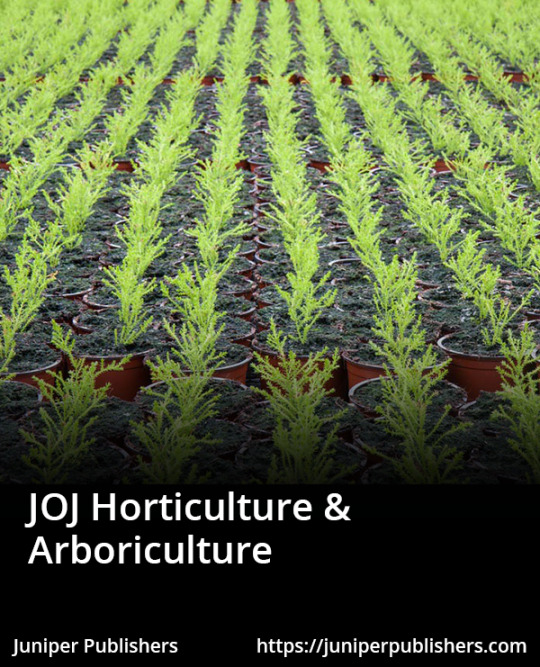
Isabel grape is one of the main cultivars used for juice processing, but presents deficiency in anthocyanins, pigments responsible for the color. Thus, an alternative for increasing the color is to promote synthesis of this compound, which can be accomplished using growth regulators, like abscisic acid (ABA). This work aimed to evaluate anthocyanins and polyphenols concentration in berry and juice of ‘Isabel’ grape treated with abscisic acid in different maturation stages. Statistical model used was a randomized block design with seven treatments and five replications: control; S-ABA 400mgL-1, applied 7 days before véraison (DBV); S-ABA 400mgL-1, applied at véraison (V); 7 days after véraison (DAV); S-ABA 400mgL-1, applied 7DBV + S-ABA 400mgL-1 35 days after the first application (DAFA); S-ABA 400mgL-1, applied at V + S-ABA 400mgL-1 35DAFA; and S-ABA 400mgL-1, 7DAV + S-ABA 400mgL-1 35DAFA. S-ABA application increases anthocyanins concentration, color variables, and acceptability of juices in sensory analysis, without affecting polyphenols concentration. Two applications of S-ABA 400mgL-1 provide best results regarding the increment of berries and juice color of ‘Isabel’ grape.
https://juniperpublishers.com/jojha/JOJHA.MS.ID.555554.php
To read more...Full Text in JOJ Horticulture & Arboriculture (JOJHA) in JuniperPublishers
0 notes
Link
0 notes
Text
7 Days Before Valentine Ep 6: Stray Thoughts
Sunshine

First of all, Sunshine, @respectthepetty and I are on the way, we've got bats with your name carved in them, so I'd advise you to start running.
Sunshine is one of the characters I hate the most this year, especially as a main character/protagonist. But I do think they are doing an incredible job with his characterization in that this is a man with no one in his life, he doesn't interact with his parents, he has no friends, and based off the way he behaves you can tell exactly why. This is the most impulsive, self-absorbed man I've seen in quite some time.
Sunshine reminds me of the guys in my life I've known who are deeply in need of help, but turn everything in to a joke and absolutely, willfully refuse to talk about anything real. Sunshine absolutely, willfully refuses to pause for long enough to actually think about how terrible of a person he is and how much he is harming those around him as a result of that.
I don't even think Sunshine knows what he wants. He had a chance in his previous wish to just completely try again, in the best possible scenario where marriage equality has been passed and Rain doesn't know who he is, Sunshine has a clean slate, but that isn't good enough, so he ruins society, and that doesn't work, so he hurts Rain in the most fundamentally cruel way by removing his best friend from existence. Sunshine is hurting Rain so that he can be in a relationship with Rain, which is all I need to know to decide that Rain and Sunshine better not fucking end up together in this.
The Flowers
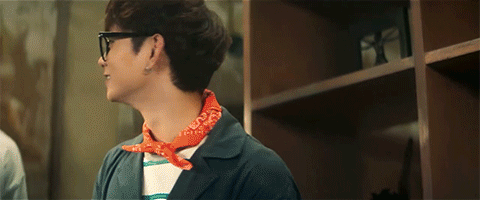
gif by @save-the-data
Okay, I don't know why, but the way Jared talks about his flowers is making me this of this book I read years ago called Daughter of Smoke and Bone where the main character is like living in the real world but has connections to this other fantasy world, and she goes to her friend to make wishes (for example, she wishes that her hair would naturally grow blue) and she only learns way later that every time she makes a wish the wish is paid for with (I think?) someone's tooth. And she realized that people, creatures, etc had died or been tortured to have their teeth removed so that she could make silly little wishes.
I don't know that I want this, I don't know what it would do or what it would say, but for some reason I cannot get it out of my head that these flowers with names that Jared talks about so lovingly are actual people's souls. Especially after that one rose fucking screamed when Sunshine dropped it.
Metaphors

gif by @save-the-data
The back half of last episode and the first half of this episode were really heavy on the theme of conformity. And I don't think I have a lot of words for it right now, but it is feeling very much like metaphors for externalized/internalized homophobia and the closet. Like how the little girl draws this picture of herself in a pink dress and writes SOS, while walking neatly in a line, in the same boring uniform as all the rest of the kids. Like the vibrant ecclectically dressed property manager, also choosing to conform when she goes out in public because she doesn't want to be stared at. Like the busker getting hauled away/punished by the police for breaking free from society's order. Like Jared, bright, happily, bubbly, and (in my opinion) visibly queer man being terrified of being hauled away to be "corrected". And this is all stemming from snap decisions Sunshine is making out of petty bullshit with almost zero intelligent thought behind his wishes.
How I want this to end
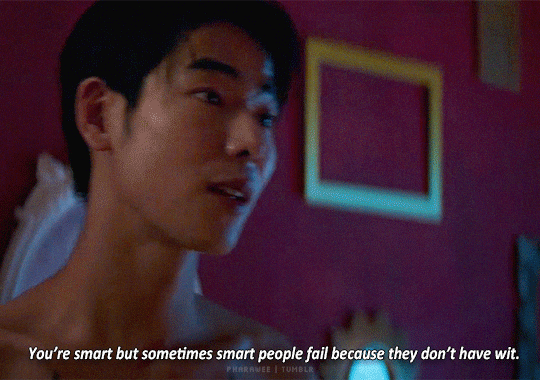
gif by @pharawee
I think I want Sunshine to wish Q away from existence. Q's job is very clearly weighing on him, and he deserves rest. For fuck's sake, his clothing gets darker every episode Sunshine needs to accept that Rain is gone from him, that he fucked up and can't go back, and I do not want Rain getting together with someone that really seems to disregard the harm he is causing.
Anyway, I am really enjoying this show, but it is slow as fuck and if it wasn't filmed, written, and structured like a play I don't think I would have had as high a tolerance for it's pacing.
27 notes
·
View notes
Text
Making Sunshine audition for Macbeth with those particular monologues was the most evil choice Tu Punnasak could have made and it was
a) on the nose
b) necessary
c) brilliant
d) absolutely fucking hilarious
Sunshine was far far far overdue for a reckoning with his actions and I'm glad things are finally starting to sink in.
7 notes
·
View notes
Text
*holds breath*...thank the lord
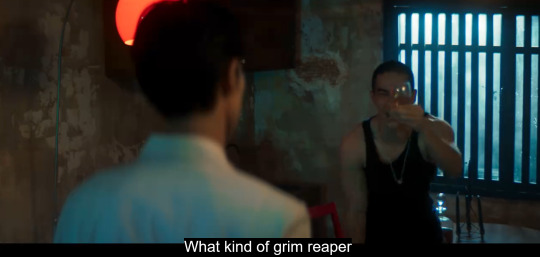
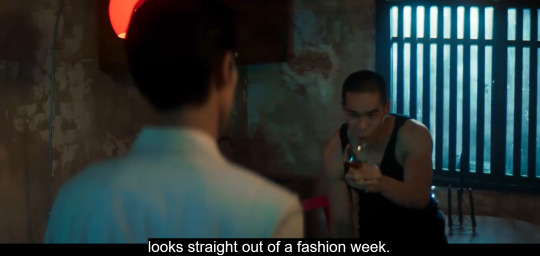
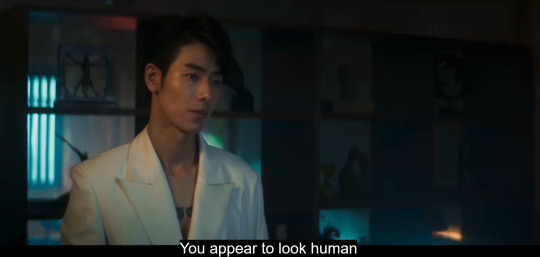
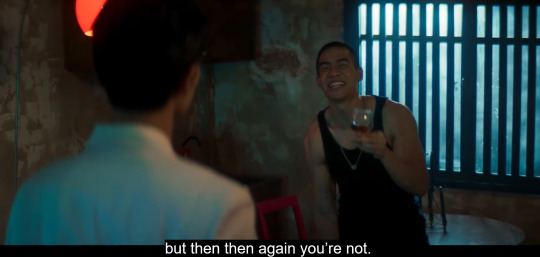
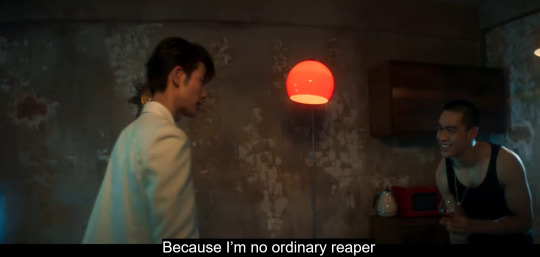

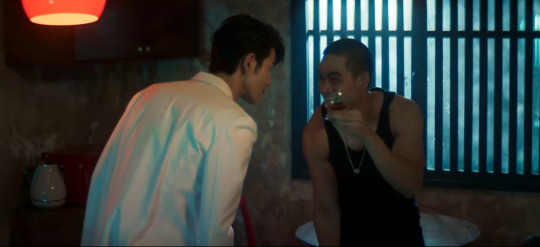
17 notes
·
View notes
Text
the fact that 7 Days Before Valentine and Love for Love's Sake decided to hurt me the same exact way with the same exact plot point on the same exact day today is wild
if i had a nickel for every time etc etc
10 notes
·
View notes
Text
this is an ems elevator in this haus and why is it appearing now in a show after @colourme-feral ask me if i ever used one


11 notes
·
View notes
Text
quick question..do you even know his full name or is this gonna be a "erase the one that is in love with rain" and that other dudes gets erased kinda thing?-
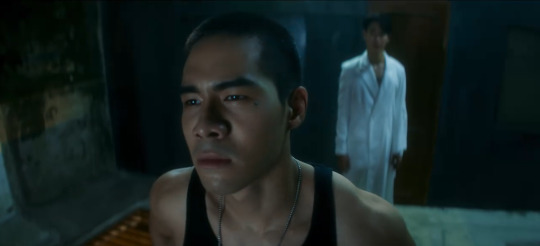
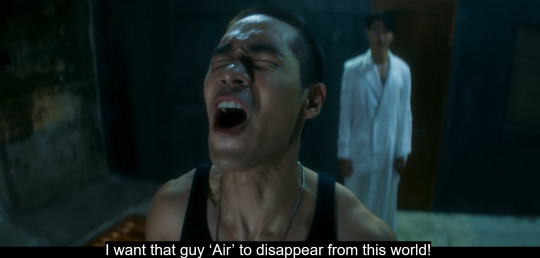
....yeah pretty sure that there are more then one person named air in this world but okay 😂-

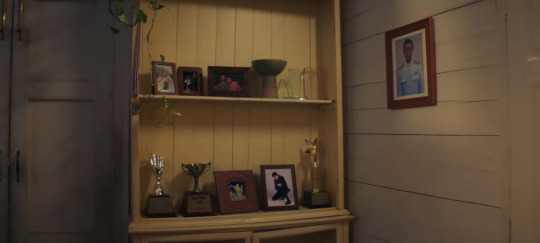
WHAT
9 notes
·
View notes